Moon Landing Conspiracy Theory - Real Hoax? ...Or Debunked? - Full Documentary
Moon landing conspiracy theories claim that some or all elements of the Apollo program and the associated Moon landings were hoaxes staged by NASA, possibly with the aid of other organizations. The most notable claim is that the six crewed landings (1969–1972) were faked and that twelve Apollo astronauts did not actually walk on the Moon. Various groups and individuals have made claims since the mid-1970s that NASA and others knowingly misled the public into believing the landings happened, by manufacturing, tampering with, or destroying evidence including photos, telemetry tapes, radio and TV transmissions, and Moon rock samples.
Much third-party evidence for the landings exists, and detailed rebuttals to the hoax claims have been made. Since the late 2000s, high-definition photos taken by the Lunar Reconnaissance Orbiter (LRO) of the Apollo landing sites have captured the Lunar Module descent stages and the tracks left by the astronauts. In 2012, images were released showing five of the six Apollo missions' American flags erected on the Moon still standing. The exception is that of Apollo 11, which has lain on the lunar surface since being blown over by the Lunar Module Ascent Propulsion System.
Despite the fact that they are demonstrably false and universally regarded as pseudoscience, these conspiracy theories have held public interest for more than 40 years. Opinion polls taken in various locations have shown that between 6% and 20% of Americans, 25% of Britons, and 28% of Russians surveyed believe that the crewed landings were faked. Even as late as 2001, the Fox television network documentary Conspiracy Theory: Did We Land on the Moon? claimed NASA faked the first landing in 1969 to win the Space Race.
An early and influential book about the subject of a Moon-landing conspiracy, We Never Went to the Moon: America's Thirty Billion Dollar Swindle, was self-published in 1976 by Bill Kaysing, a former US Navy officer with a Bachelor of Arts in English. Despite having no knowledge of rockets or technical writing, Kaysing was hired as a senior technical writer in 1956 by Rocketdyne, the company that built the F-1 engines used on the Saturn V rocket. He served as head of the technical publications unit at the company's Propulsion Field Laboratory until 1963. The many allegations in Kaysing's book effectively began discussion of the Moon landings being faked. The book claims that the chance of a successful crewed landing on the Moon was calculated to be 0.0017%, and that despite close monitoring by the USSR, it would have been easier for NASA to fake the Moon landings than to really go there.
In 1980, the Flat Earth Society accused NASA of faking the landings, arguing that they were staged by Hollywood with Walt Disney sponsorship, based on a script by Arthur C. Clarke and directed by Stanley Kubrick. Folklorist Linda Dégh suggests that writer-director Peter Hyams' film Capricorn One (1978), which shows a hoaxed journey to Mars in a spacecraft that looks identical to the Apollo craft, might have given a boost to the hoax theory's popularity in the post-Vietnam War era. Dégh sees a parallel with other attitudes during the post-Watergate era, when the American public were inclined to distrust official accounts. Dégh writes: "The mass media catapult these half-truths into a kind of twilight zone where people can make their guesses sound as truths. Mass media have a terrible impact on people who lack guidance." In A Man on the Moon, first published in 1994, Andrew Chaikin mentions that at the time of Apollo 8's lunar-orbit mission in December 1968, similar conspiracy ideas were already in circulation.
#conspiracy #interstingfacts #mystery
-
 2:24:41
2:24:41
WinningReality
7 months agoUnveiling Reality - Debunking the Moon Landing Hoax Conspiracy
1.86K9 -
 39:59
39:59
1truth
1 year agoThe Moon Landings Hoax
89 -
 6:18
6:18
Unjabbed.net - Dating & Conversation For the Unvaccinated
8 months agoThe Moon Landing Hoax
77 -
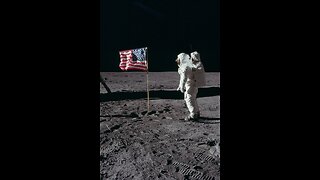 12:59
12:59
WatchmanNewz
10 months agoMoon Landing Hoax
38 -
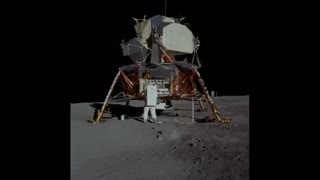 39:59
39:59
OP Freedom
1 year agoThe moon landing hoax - By Taboo Conspiracy
14K90 -
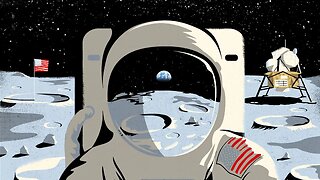 4:30:56
4:30:56
Sαιͷτ Ρεɾcɨval
1 year agoMoon Landing Hoax
82 -
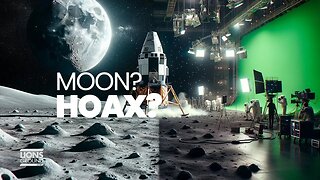 4:28
4:28
Lions Ground
6 months agoThe Moon Landing Fact or Fiction?
680 -
 52:02
52:02
Mafia77
1 year agoMoon Landing - The World's Greatest Hoax
661 -
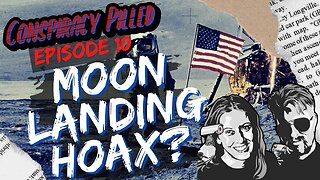 1:15:23
1:15:23
Conspiracy Pilled
1 year agoMoon Landing Hoax? (CONSPIRACY PILLED ep. 10)
3.95K17 -
 1:01:00
1:01:00
The Edge Broadcast
1 year agoMoon Landing Conspiracy
6.61K